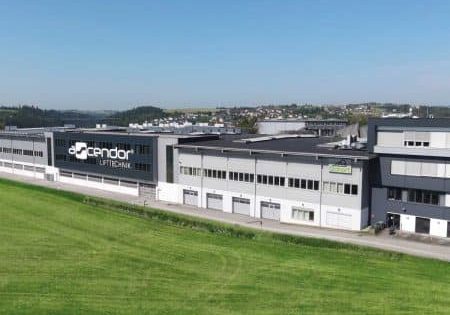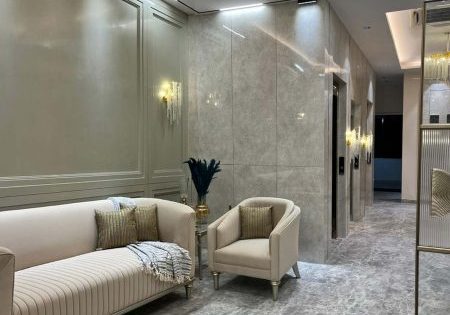Industry shifts toward smart building integration and mobility.
Being future-ready is an essential attribute for businesses to survive and grow; the vertical-transportation (VT) industry is no exception to this rule. To ensure VT business is in sync with industry predictions, it is important to have a wider overview of the market and its demand drivers, including the gradual shift toward smart building integration and mobility. In recent years, aspects like integration, access and safety have become even more significant in the elevator industry. Technological advancements and changing societal expectations have contributed to the evolution of elevator systems. Here are how these aspects are gaining importance:
- Integration:
- Smart Building Integration: Modern elevators are increasingly integrated into larger smart building systems. They are connected to building management systems (BMS) and other Internet of Things (IoT) devices to optimize energy usage, track usage patterns, predict failures and enhance overall building efficiency.
- Data Connectivity: Elevators now often come equipped with sensors and connectivity features that allow real-time monitoring and predictive maintenance. This integration enables elevator companies to collect data on usage patterns, performance and potential issues, allowing for more efficient maintenance and improved reliability.
- Access Control:
- Security Measures: Access control in elevators has become more sophisticated to enhance security. This includes biometric authentication, key-card systems and facial recognition technology. These measures help control and monitor who has access to specific floors or areas within a building.
- Destination Control Systems: Elevator systems have evolved from traditional up and down controls to destination control systems. Passengers input their desired floor outside the elevator, and the system directs them to the most efficient and quickest elevator to respond to the call. This not only improves efficiency, but also enhances security by minimizing unauthorized access.
- Safety:
- Emergency Evacuation Procedures: Elevator safety has always been a critical concern, and recent innovations focus on improving emergency evacuation procedures. Advanced technologies such as safe landing, next landing and backup power systems ensure that elevators can safely bring passengers to the nearest floor in the event of a system failure or power outage.
- Communication Systems: Improved communication systems, including three-way communication devices within elevators, help passengers in case of emergencies. This ensures a prompt response from building management or emergency services.
- Anti-Collision Systems: Some elevators now feature advanced sensors and anti-collision systems to prevent accidents. These technologies can detect obstructions in the door path or unexpected movements and take corrective actions to avoid accidents.
- User Experience:
- User-Friendly Interfaces: Touchless controls and intuitive design elements enhance the overall user experience.
- Mobile Apps and Smart Technologies: Users can call elevators, select floors and even access personalized settings directly from their smartphones.
- Remote Monitoring and Maintenance:
- Elevator systems can be remotely monitored for performance and maintenance needs. This helps identify potential issues before they become major problems, reducing downtime and inconvenience for users.
In conclusion, the elevator industry is evolving to meet the demands of modern buildings and their occupants. Integration, access control, safety features and energy efficiency are key areas of focus as technology continues to shape the future of elevator systems. As part of a study, 20-plus professionals dealing directly with VT business development were interviewed in an unstructured survey about their plans to meet the demands of modern buildings and their occupants through integration, access control, safety features and energy efficiency. We managed to gather valuable insights using indirect questions, and this is what respondents had to say:
- VT professionals see potential in smart building integration and mobility, but there is very limited market awareness and many queries relating to owner and user benefits. VT professionals need to promote customer education on adoption of smart building integration and mobility.
- A few of the VT professionals had varying opinions on smart building integration and mobility and rapid technological advancements. Concerns about the complexity of integrating and maintaining these systems and compliance with building codes and safety regulations may depend on the extent to which regulations facilitate safety and innovation or present challenges in implementation.
- Important feedback was received on the differences that exist in policies and regulations on protection and data governance with big customers, highlighting the critical role of compliance and collaboration on finalizing smart building integration and mobility projects. Progress has been made in this respect, in which their legal teams are actively engaged.
- A few of the VT professionals mentioned that the notable trend in major projects is the growing demand for innovative solutions that streamline processes and improve efficiency. As a result, there has been a significant increase in the development of cutting-edge technologies and software applications tailored specifically for this market segment.
- There were suggestions from a few VT professionals about updating regulatory guidelines for the secure implementation of smart building integration and technological advancements and facilitating timely communication with market participants. By doing so, regulators can help the VT industry maintain high standards of consumer protection while remaining agile and adaptive to the continuously changing landscape.
- Many of the VT professionals were aware of major gaps in building integration and mobility provided by elevators and escalators, users, property managers, facility management companies and real estate companies, and spoke of their work in progress. They also shared that they were working toward strategic long-term collaboration with leading software companies to consolidate, harmonize and modernize elevators and escalators in the building integration and mobility landscape.
- There was interesting feedback from VT professionals indicating:
- They had successful projects on the digital landscape to facilitate integrated application management. Customers are happy, but they find buyers are not ready to pay appropriate additional costs.
- During the interviews with VT professionals, it was noted that user interface design is a crucial element in the creation of engaging and user-friendly smart elevator experiences. A high-quality user interface design is characterized by various features such as ease of use and ability to meet the needs of users.
India is a fast-growing country with rapid urbanization, and that is bound to fuel the need for connected elevators and escalators in the long run. In your author’s opinion, the progressive maturation and advancement of technologies will continuously reshape the smart building integration and mobility landscape.
The shift toward smart building integration and mobility presents an important opportunity for the VT industry. Through collaborative efforts of VT professionals, regulators and related third parties and a strong focus on end-to-end solutions, a simplified and agile digital landscape is needed to facilitate integrated application management.
Get more of Elevator World. Sign up for our free e-newsletter.








